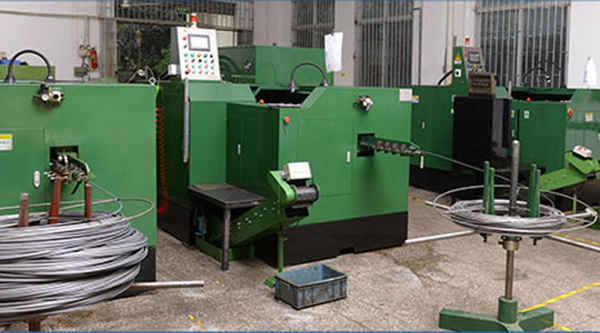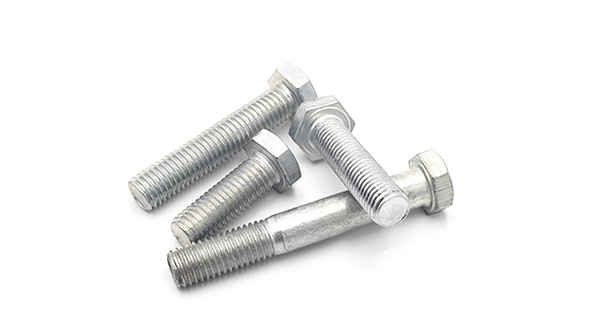What is the tolerance range of precision screws?
What is the tolerance range of precision screws?
Service Hotline
+86760-8787 8587We have more than ten years of experience in the production of screw industry, the main products are: ring expansion bolts, furniture thin head hexagonal chamfered screws, external serrated internal teeth, hollow chassis motherboard computer screws, fasteners Dacromet bolts, alloy steel bolts, Blackened and hardened machine screws, carbon steel Q215 furniture trapezoidal nuts, bearing spring washers, monitoring and security copper pillars, cup head cylindrical head round head countersunk head 12.9, lifting ring screws bolts and nuts, national standard stainless steel gaskets, square neck anti-theft screw screws ,Handle stainless steel bolts and other fasteners, due to different product materials and specifications, the price is also different, if necessary, please contact us.


The screw refers to the screw (foreign name: Screw), which is a tool that uses the physical and mathematical principles of the oblique circular rotation of the object and the frictional force to gradually fasten the utensils and parts. Screw installation names are divided into: machine screws, self-tapping screws, drill-tail screws, wallboard screws, fiberboard screws, wood screws, hexagonal wood screws, non-prolapse screws, combination screws, miniature screws, furniture screws, electronic screws, chain belt screws .

In the process of automatically locking the screw to the product, there are only three types of screw supply mechanisms in the traditional automatic screw locking machine: 1. Magnet sucks for screws; 2. Vacuum sucks for screws; 7. Air blows for screws. The above three methods require long-distance screw supply, resulting in slow screw supply, low efficiency and high manufacturing cost. To this end, we propose an automatic locking screw machine that can directly supply screws.


Stamping die is a special process equipment for processing materials into parts in cold stamping processing, called cold stamping die. Stamping is to use the die installed on the press to apply pressure to the material at room temperature to make it produce Separation or plastic deformation to obtain the required parts of a pressure processing method, the technology generally used is to make corresponding holes and punches on the template, this method cannot meet the requirements for small batches and short delivery time products , the relative cost is relatively high, so a rivet die structure is required to improve the above problems.

Subject content and scope of application This technical requirement specifies the technical requirements for the manufacture, installation and inspection of high-strength bolted joints of mobile machinery and equipment. Contents not specified in this technical requirement shall be implemented in accordance with relevant national standards. This technical requirement applies to mobile machinery steel structures that require high-strength bolted connections. This technical requirement applies to quality control and construction methods for in-plant and on-site installations. 2. Joint surface treatment 2.1 For friction type high-strength bolt connections, the joint surfaces at the joints are required to be in close contact with each other and have a sufficient friction coefficient. When the design drawing does not specify the treatment requirements for the joint surface, the treatment shall be carried out according to the following regulations: sandblasting or shot blasting the joint surface of high-strength bolts, remove impurities such as rust and oil stains on the surface, and reach the Sa2.5 standard , the roughness is 50 ~ 75μm, and the friction coefficient shall not be lower than 0.40. When there are regulations in the drawings, follow the regulations in the drawings. 2.2 The friction surface of the treated high-strength bolt connection should take protective measures to prevent contamination with dirt and oil. It is strictly forbidden to make any marks on the friction surface of the high-strength bolt connection. During storage in the factory, or during transportation, to the installation site, special precautions should be taken to prevent contamination of the connection surfaces. The installation unit should pay special attention to protecting the cleanliness and friction surface characteristics of the connecting plate of the high-strength bolt and the connecting surface of the parent body. It is not allowed to use a grinder to grind the connecting surface of the connecting plate and the connecting surface of the parent body. 3 Inspection of the anti-slip coefficient of the friction surface of high-strength bolts The inspection of the anti-slip coefficient should be based on the steel structure manufacturing batch, and each 2000t of a single project is regarded as a manufacturing batch, and those less than 2000t are regarded as a batch. When two or more surface treatment processes are selected, each surface treatment process needs to be inspected. Each batch of three groups of specimens. If the connection is diffused to an external enterprise, each corresponding enterprise shall conduct an anti-slip coefficient test. 3.1 The test piece used for the anti-slip coefficient test should be processed by the factory or the diffusion enterprise. The test piece and the representative steel structure member should be of the same material, produced in the same batch, using the same friction surface treatment process and have the same surface state. And use the same batch of high-strength bolt connection pairs of the same performance level and store them under the same environmental conditions. The anti-slip coefficient test is carried out according to the test method of GB50205 Code for Acceptance of Construction Quality of Steel Structure Engineering. 3.2 The minimum value of the anti-slip coefficient inspection must be equal to or greater than the design specified value. When the above specified values are not met, the friction surface of the component should be reprocessed. The friction surface of the treated component is re-inspected. 4. Connection and installation of friction type high-strength bolts for steel structures 4.1 Preparations before installation 4.2 Select qualified bolts, nuts and washers. The guarantee period for the torque coefficient of the connecting pair is six months from the date of delivery. 4.3 Bolts, nuts and washers in the following cases are unqualified products and are prohibited from being used. a. The source (manufacturer) is unknown; b. The mechanical properties are unknown; c. The torque coefficient k is unknown; d. Defective; e. No performance test report attached; f. Mixed with other batches of bolts; g. Bolts with insufficient length, that is, the bolt head does not show the end face of the nut after tightening. Generally, the length of the end face of the nut to be taken out is 2 to 3 threads. h. The torque coefficient of the connecting pair exceeds the warranty period. Special attention should be paid to waterproofing during transportation and storage. 4.4 Before the construction of the large hexagonal head high-strength bolts, the torque coefficient of the high-strength bolt connection pair should be re-inspected according to the factory approval. Each batch of 8 sets should be re-inspected. Less than or equal to 0.010. The re-inspection method of the torque coefficient shall be carried out in accordance with the provisions of GB50205 Code for Acceptance of Construction Quality of Steel Structure Engineering. The installation of high-strength bolts should be carried out within a short period of time after the test.

The above content is uploaded by Yueluo or the Internet. If there is any copyright issue, please contact [email protected].

What is the tolerance range of precision screws?

How to choose the right stainless steel screw manufacturer?

Why is there an R angle under the head of the hexagon head s...

We have more than ten years of production experience in the ...

We have more than ten years of production experience in the ...

We have more than ten years of production experience in the ...

We have more than ten years of experience in the production ...